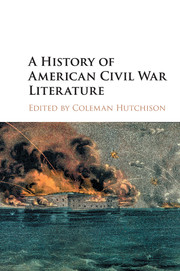Preface
Published online by Cambridge University Press: 05 December 2015
Summary
There can be little doubt about ongoing scholarly and popular interest in the American Civil War. More than 150 years after Appomattox, readers throughout the Anglophone world remain riveted by studies of and stories about this great internecine conflict. Indeed, estimates suggest that there have been 60,000 Civil War–related books or pamphlets published since 1865. That is a publication rate of a book a day, every day, since the cessation of hostilities. As with the “founding fathers” and Shakespeare, there is a robust publishing industry at work here, one that ensures that the Civil War is never far from mind.
Not surprisingly, then, literary representations of the war are an obsession for critics and lay readers alike. For instance, the Civil War poetry of Walt Whitman, Emily Dickinson, and Herman Melville are mainstays in high school and college curricula, while postwar narratives such as Stephen Crane's The Red Badge of Courage (1895), Margaret Mitchell's Gone with the Wind (1936), and Shelby Foote's The Civil War: A Narrative (1958–1974) prove “steady sellers” decade after decade. This is to say nothing of contemporary writers like Geraldine Brooks, E.L. Doctorow, and Natasha Trethewey, who continue to produce new literature about the war well into the twenty-first century.
In response to this seemingly ceaseless literary boom, scholars from a number of disciplines – English, history, American studies, and southern studies, to name a few – have produced a lively and at times contentious critical conversation about that literature. Yet, despite perpetual interest in literary representations of the conflict, this volume is the first omnibus history of the literature of the American Civil War. It also provides an uncommon opportunity to redefine the boundaries of that literature and rethink its place in American culture.
The twenty-two essays that follow make at least three key contributions to the current scholarship. First, rather than simply restate the age-old consensus about the American Civil War and its literature, this volume's essays take account of new directions in Civil War historiography and cultural studies. For instance, several of the essays emphasize the transnational and transatlantic aspects of this purported “war between brothers.” By emphasizing the ways that the conflict implicated nations other than or in addition to the United and Confederate States, the volume expands the mental map on which the American Civil War is played out.
- Type
- Chapter
- Information
- A History of American Civil War Literature , pp. xvii - xxiiPublisher: Cambridge University PressPrint publication year: 2015

